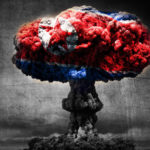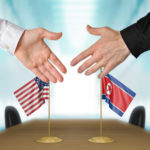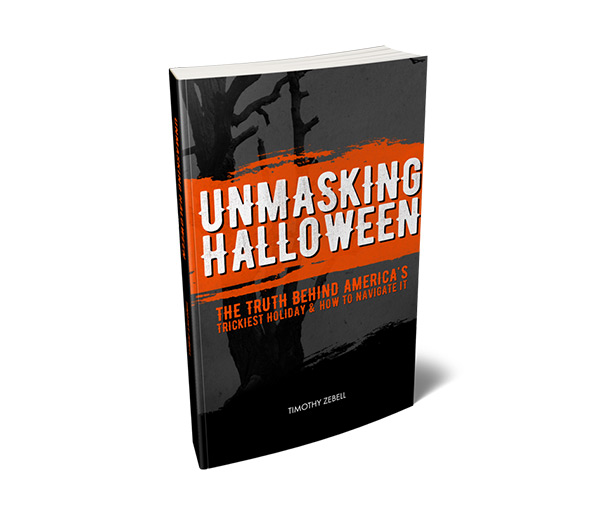The Korean Armistice Agreement halted the bloodshed of the Korean War which cost the United States 36,000 American soldiers and wounded another 100,000.[1] Signed on July 27, 1953, the armistice was designed to suspended hostilities while a formal peace treaty could be negotiated. Sixty-four years later, no such peace treaty has been signed.[2] As such, the Korean War has never formally ended, leaving the North Koreans with no assurances that they will not be attacked.
Chief among the obstacles impeding a formal peace treaty has been the United States’ insistence that North Korea commit to denuclearization and halt their missile tests before any such negotiations begin.[3] To accomplish this, successive American presidents have opted for a diplomatic solution. In October of 1994, then President Bill Clinton, with the aid of former president Jimmy Carter, negotiated a deal known as the Agreed Framework with the incoming leader Kim Jong Il.[4] While the deal was politically advantageous, allowing the President to proclaim a major foreign policy success weeks before the mid-term election, the agreement also bolstered the political capital of Kim Jong Il, a man whom the United States had regularly denounced as “a terrorist, a supplier of missile technology to Iran and a dictator”.[5]
In 1993, the International Atomic Energy Agency sought to inspect two of North Korea’s nuclear waste storage sites.[6] In response, North Korea kicked out the international inspectors and threatened to withdraw from the Treaty on the Non-proliferation of Nuclear Weapons.[7] The North Koreans had also built a 5-megawatt reactor and plutonium processing plant and had separated enough plutonium from spent fuel to build multiple nuclear weapons, according to Joshua Pollack, a senior research associate at the James Martin Center for Non-proliferation Studies.[8][9] Furthermore, they were constructing a 50-megawatt reactor at Yongbyon and a 200-megawatt plant at Taechon which they claimed were for the purpose of generating electricity.[10]
The Agreed Framework mandated that the North Koreans stop construction of the new reactors, take their completed reactor offline, and remove from the country the spent fuel from their 5-megawatt reactor at Yongbyon.[11] In exchange, the United States would facilitate and help finance the construction of two 1,000-megawatt light water nuclear power reactors and would help supply 500,000 metric tons of heavy-fuel oil to help compensate for the electricity-generating capacity that the Koreans were sacrificing by freezing their reactors.[12]
At the time, Clinton foreign policy wonks claimed that light water reactors could not be used to create weapons. As such, President Clinton announced, “North Korea will freeze and then dismantle its nuclear program”.[13] He also assured, “This agreement will help achieve a longstanding and vital American objective – an end to the threat of nuclear proliferation on the Korean Peninsula.”[14] However, Henry Sokolski, head of the Non-Proliferation Policy Education Center in Washington, has revealed that light water reactors (LWRs) can produce weapons. According to Sokolski, “LWRs could be used to produce dozens of bombs’ worth of weapons-grade plutonium in both North Korea and Iran. This is true of all LWRs — a depressing fact U.S. foreign policy makers have managed to block out.”[15]
Despite the efforts to appease North Korea, they accelerated their enriched uranium efforts, which technically wasn’t a direct violation of the Agreed Framework.[16] Years later, during the 2002 State of the Union Address, then President George W. Bush labeled North Korea, Iran, and Iraq an “axis of evil” who posed a grave and growing threat due to their efforts to acquire weapons of mass destruction.[17] Later that same year, the Bush Administration revealed that North Korea had admitted to operating a uranium enrichment program which could be used to build nuclear weapons, therefore, violating their agreement to forgo acquiring such weapons.[18] It appears that there was never a point when North Korea ceased its nuclear weapons program.[19] North Korea denied the charge, but the U.S. and its KEDO allies suspended its shipments of heavy-fuel oil to North Korea.[20][21]
On January 10, 2003, North Korea withdrew from the Nuclear Non-Proliferation Treaty, saying, “Though we pull out of the N.P.T., we have no intention to produce nuclear weapons and our nuclear activities at this stage will be confined only to peaceful purposes such as the production of electricity.”[22] Additionally, the North Korean ambassador warned the United Nations that any attempt by the Security Council to impose sanctions on North Korea because of their nuclear program would be considered a “declaration of war.”[23] The next month, in February, 2003, North Korea reactivated its 5-megawatt reactor in Yongbyon. Two months later, North Korea declared that it was in possession of nuclear weapons.[24]
The voiding of the Framework Agreement spawned the Six Party Talks, which included North Korea, the United States, South Korea, China, Russia, and Japan.[25] These talks eventually secured an agreement by North Korea to abandon its entire nuclear program in exchange for energy assistance and economic cooperation.[26] This, however, was short-lived. After test firing long-range missiles in July of 2006, the United Nations Security Council passed a resolution demanding that North Korea suspend the program.[27] Three months later, North Korea claimed to have successfully tested its first nuclear weapon which incited a broad array of additional U.N. sanctions.[28]
Once again, in 2007, North Korea agreed to deactivate its main nuclear reactor in exchange for an aid package worth $400 million.[29] Additionally, they signed an agreement to begin disabling their nuclear weapons facilities.[30] However, North Korea missed its deadline to disable its weapons facilities.[31] Nevertheless, on October 11, 2008, North Korea was removed from the United States’ list of states that sponsor terrorism.[32]
The Six Party Talks collapsed in 2008 when North Korea refused to allow international inspectors unrestricted access to their suspected nuclear sites.[33] Then, on May 25, 2009, North Korea announced that it had conducted a second nuclear test which incited further U.N. sanctions.[34] In 2010, North Korea was reported to have constructed a new nuclear enrichment facility.
At the end of 2011, the Six Party Talks were reinstituted under the new Korean leadership of Kim Jong Un, and in 2012, North Korea agreed to pause its long-range missile tests, along with the bulk of its nuclear program, in exchange for food aid.[35] Less than a year later, North Korea reinstituted these programs, declaring the United States to be “the sworn enemy of the Korean people.”[36] On February 12, 2013, North Korea conducted its third nuclear test which resulted in additional U.N. sanctions.[37]
On March 30, 2014, tensions escalated when North Korea prepared for another nuclear test. The next day, they fired hundreds of shells across the border into the sea near South Korea. South Korea retaliated by firing 300 shells into North Korean waters and mobilized their jets.[38] North Korea continued its aggressive posturing, boasting that they possessed the missile capacity to strike the United States mainland, miniaturize nuclear warheads that could fit onto ballistic missiles, and the successful development and testing of a hydrogen bomb.[39] Furthermore, they claimed to have detonated a nuclear warhead and threatened to soon test an intercontinental ballistic missile.[40] Nevertheless, the United States largely dismissed these claims, responding with skepticism.[41] In fact, throughout then President Barack Obama’s administration, the U.S. scaled back its missile defense systems.[42][43]
In June 2017, Otto Warmier, an America college student who was detained in North Korea and tortured for 17 months, was returned to the U.S. severely brain damaged and in a vegetative state. He died days later.[44] On July 4, 2017, North Korea claimed to have successfully tested an intercontinental ballistic missile that could “reach anywhere in the world.”[45] On August 5, 2017, President Donald Trump’s administration spearheaded a unanimous United Nations Security Council vote to impose further sanctions on North Korea, estimated to cost them up to $1 billion annually in lost trade revenue.[46] Two days later, U.S. spy satellites detected North Korea moving anti-ship cruise missiles onto a patrol boat.[47] In response to a reporter’s question on August 8, President Donald Trump warned that North Korea would be met with fire and fury like the world has never seen if it continues to threaten the United States.[48] In response, North Korea threatened the U.S. territory of Guam, where 163,000 U.S. citizens reside, and a key U.S. Air Force base is located.[49] Additionally, the Strategic Force of the North Korean People’s Army threatened a pre-emptive ballistic missile strike against the United States mainland.[50]
“Although shooting stopped in 1953, Pyongyang insists that the Korean War never ended. It maintains as an official policy goal the reunification of the Korean peninsula under the Kim dynasty.”[51] Because of this, North Korea is desperately pursuing a nuclear weapons program designed to “repel” an invasion by inflicting massive casualties in the early days of conflict.[52] Regardless of the armistice, North Korea is still a nation at war, and our failure to accept this is a chief reason why our foreign policy has failed.
This article is excerpted from the paper “Evaluating the North Korean Crisis.”
Free Downloads
Share...
1. “Korean War Costs High in Men, Misery, Money.” United Press International, July 27, 1953. Accessed August 10, 2017. https://www.upi.com/Archives/1953/07/27/Korea-War-cost-high-in-men-misery-money/7064925114921/.
2. Dobbins, James and Jeffrey Hornung. “End the Korean War, Finally.” The New York Times, June 8, 2017. Accessed August 10, 2017. https://www.nytimes.com/2017/06/08/opinion/end-the-korean-war-finally.html.
3. Ibid.
4. Gillin, Joshua. “Viral Image Wrongly Blames Bill Clinton for Giving North Korea the Means to Make Nuclear Weapons.” Politifact, August 9, 2017. Accessed August 10, 2017. http://www.politifact.com/punditfact/statements/2017/aug/09/viral-image/viral-image-wrongly-blames-bill-clinton-giving-nor/.
5. Sanger, David. “Clinton Approves a Plan to Give Aid to North Koreans.” The New York Times, October 19, 1994. Accessed August 10, 2017. http://www.nytimes.com/1994/10/19/world/clinton-approves-a-plan-to-give-aid-to-north-koreans.html?pagewanted=all.
6. “North Korea Nuclear Timeline Fast Facts.” CNN, August 8, 2017. Accessed August 10, 2017. http://www.cnn.com/2013/10/29/world/asia/north-korea-nuclear-timeline—fast-facts/.
7. Gillin, “Viral Image Wrongly Blames Bill Clinton for Giving North Korea the Means to Make Nuclear Weapons.”
8. “The U.S.-North Korean Agreed Framework at a Glance.” Arms Control Association, September, 2004. Accessed August, 10, 2017. https://www.armscontrol.org/system/files/agreedframework.pdf.
9. Gillin, “Viral Image Wrongly Blames Bill Clinton for Giving North Korea the Means to Make Nuclear Weapons.”
10. “The U.S.-North Korean Agreed Framework at a Glance.”
11. Ibid.
12. Ibid.
13. David Gruen. “Bill Clinton on Virtues of North Korean Nuclear Deal – History Repeats Itself.” YouTube video. https://www.youtube.com/watch?v=6TcbU5jAavw (accessed August 10, 2017).
14. Sanger, “Clinton Approves a Plan to Give Aide to North Koreans.”
15. Watson, Paul. “Who Gave North Korea Nukes in the First Place?” Infowars, April 12, 2013. Accessed August 10, 2017. https://www.infowars.com/who-gave-north-korea-nukes-in-the-first-place/.
16. Gillin, “Viral Image Wrongly Blames Bill Clinton for Giving North Korea the Means to Make Nuclear Weapons.”
17. “North Korea Nuclear Timeline Fast Facts.”
18. “The U.S.-North Korean Agreed Framework at a Glance.”
19. “You Can Thank Jimmy Carter and Bill Clinton for North Korea’s Nukes.” New York Post, January 6, 2016. Accessed August 10, 2017. http://nypost.com/2016/01/06/you-can-thank-jimmy-carter-and-bill-clinton-for-north-koreas-nukes/.
20. “The U.S.-North Korean Agreed Framework at a Glance.”
21. KEDO stands for Korean Peninsula Energy Development Organization.
22. Mydans, Seth. “North Korea Assailed for Withdrawing from Arms Treaty.” The New York Times, January 10, 2003. Accessed August 10, 2017. http://www.nytimes.com/2003/01/10/international/north-korea-assailed-for-withdrawing-from-arms-treaty.html.
23. Ibid.
24. “North Korea Nuclear Timeline Fast Facts.”
25. “The U.S.-North Korean Agreed Framework at a Glance.”
26. “North Korea Nuclear Timeline Fast Facts.”
27. Ibid.
28. Ibid.
29. Ibid.
30. Ibid.
31. Ibid.
32. Ibid.
33. Ibid.
34. Ibid.
35. Ibid.
36. Ibid.
37. Ibid.
38. Ibid.
39. Ibid.
40. Ibid.
41. Ibid.
42. Bell, Larry. “Obama’s North Korean and Iranian Missile Defense Trajectories: Course Corrections; Russia Re-Set Dud.” Forbes, March 24, 2013. Accessed August 10, 2017. https://www.forbes.com/sites/larrybell/2013/03/24/obamas-north-korean-and-iranian-missile-defense-trajectories-course-corrections-russian-re-set-dud/#6ebf4842c68e.
43. Heinrichs, Rebeccah. “The Perils of U.S. Missile Defense.” Real Clear Defense, November 9, 2016. Accessed August 10, 2017. http://www.realcleardefense.com/articles/2016/11/09/the_perils_of_us_missile_defense_110327.html.
44. Grinberg, Emanuella. “McCain: North Korea ‘Murdered’ Former Detainee Otto Warmbier.” CNN, June 20, 2017. Accessed August 10, 2017. http://www.cnn.com/2017/06/19/politics/otto-warmbier-dies/.
45. “North Korea Nuclear Timeline Fast Facts.”
46. Taylor, Adam. “What the New U.N. Sanctions on North Korea Mean.” The Washington Post, August 7, 2017. Accessed August 10, 2017. https://www.washingtonpost.com/news/worldviews/wp/2017/08/07/what-the-new-u-n-sanctions-on-north-korea-mean/?utm_term=.0da97c9716fe.
47. Tomlinson, Lucas. “US Spy Satellites Detect North Korea Moving Anti-Ship Cruise Missiles to Patrol Boat.” Fox News, August 7, 2017. Accessed August 10, 2017. http://www.foxnews.com/world/2017/08/07/us-spy-satellites-detect-north-korea-moving-anti-ship-cruise-missiles-to-patrol-boat.html.
48. DeYoung, Karen and John Wagner. “Trump Threatens ‘Fire and Fury’ in Response to North Korean Threats.” The Washington Post, August 8, 2017. Accessed August 10, 2017. https://www.washingtonpost.com/politics/trump-tweets-news-report-citing-anonymous-sources-on-n-korea-movements/2017/08/08/47a9b9c0-7c48-11e7-83c7-5bd5460f0d7e_story.html?utm_term=.ec06412e8552.
49. Baker, Peter and Choe Sang-hun. “Trump Threatens ‘Fire and Fury’ Against North Korea if It Endangers U.S.” The New York Times, August 8, 2017. Accessed August 10, 2017. https://www.nytimes.com/2017/08/08/world/asia/north-korea-un-sanctions-nuclear-missile-united-nations.html.
50. Ibid.
51. Bowden, Mark. “How to Deal with North Korea.” The Atlantic, July/August 2017. Accessed August 10, 2017. https://www.theatlantic.com/magazine/archive/2017/07/the-worst-problem-on-earth/528717/.
52. Lewis, Jeffrey. “North Korea is Practicing for Nuclear War.” Foreign Policy, March 9, 2017. Accessed August 10, 2017. http://foreignpolicy.com/2017/03/09/north-korea-is-practicing-for-nuclear-war/.








